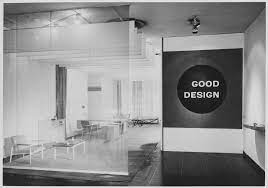The Basics of Graphic Design
Graphic design is a creative process that involves combining text and images to communicate a message effectively. Whether you’re designing a logo, a website, or a poster, understanding the basics of graphic design is essential for creating visually appealing and impactful designs.
Typography
Typography plays a crucial role in graphic design. Choosing the right font, size, and spacing can greatly impact the readability and overall aesthetic of your design. Experiment with different fonts to find the perfect combination that suits your project.
Color Theory
Understanding color theory is key to creating harmonious and visually pleasing designs. Colors evoke emotions and convey messages, so choose your color palette carefully based on the message you want to convey.
Layout and Composition
The layout and composition of your design determine how elements are arranged on the page. Consider factors such as balance, alignment, proximity, and contrast to create a visually appealing composition that guides the viewer’s eye through the design.
Images and Graphics
Incorporating images and graphics into your design can enhance its visual appeal and convey information more effectively. Choose high-quality images that are relevant to your message and use them strategically to complement your text.
White Space
White space, also known as negative space, is the empty space around elements in your design. Embracing white space can help create a sense of balance and organization in your design while allowing important elements to stand out.
Consistency
Maintaining consistency in your design elements such as fonts, colors, and styles helps create a cohesive look across all your materials. Consistency builds brand recognition and reinforces your message.
By mastering these basic principles of graphic design, you can create visually stunning designs that effectively communicate your message to your audience.
Mastering Basic Graphic Design: 6 Essential Tips for Clarity and Impact
- Keep it simple and avoid clutter
- Use a cohesive color scheme
- Choose easy-to-read fonts
- Maintain visual hierarchy to guide the viewer’s eye
- Balance elements within the design
- Utilize white space effectively
Keep it simple and avoid clutter
When it comes to basic graphic design, a key tip to remember is to keep it simple and avoid clutter. By focusing on essential elements and maintaining a clean layout, you can create designs that are visually appealing and easy to understand. Cluttered designs can overwhelm viewers and dilute your message, so embracing simplicity allows for better communication and a more impactful visual presence. Remember, less is often more in the world of graphic design.
Use a cohesive color scheme
When it comes to basic graphic design, using a cohesive color scheme is essential for creating visually appealing and harmonious designs. By selecting colors that complement each other and evoke the right emotions, you can enhance the overall look and feel of your project. A well-chosen color scheme can help establish a strong visual identity, guide the viewer’s eye, and convey the intended message effectively. Consistency in color usage across different elements of your design can also contribute to brand recognition and create a sense of unity. Remember, a cohesive color scheme is not just about aesthetics but also plays a significant role in communicating your design’s purpose and engaging your audience.
Choose easy-to-read fonts
When delving into basic graphic design, a fundamental tip to remember is to choose easy-to-read fonts. Selecting fonts that are clear, legible, and appropriate for the content can significantly enhance the readability and impact of your design. By opting for simple yet effective typography, you ensure that your message is easily understood by your audience, ultimately improving the overall communication of your visual piece.
Maintain visual hierarchy to guide the viewer’s eye
Maintaining visual hierarchy is a fundamental principle in graphic design that helps guide the viewer’s eye through the design. By establishing a clear hierarchy of elements such as size, color, contrast, and placement, designers can direct the viewer’s attention to the most important information first. This ensures that the message is communicated effectively and that the design is visually engaging and easy to navigate. Visual hierarchy not only enhances the overall aesthetics of a design but also improves its functionality by prioritizing key elements for maximum impact.
Balance elements within the design
In graphic design, balancing elements within a design is crucial to creating a visually appealing and harmonious composition. By distributing elements such as text, images, and white space evenly throughout the layout, you can achieve a sense of equilibrium that guides the viewer’s eye smoothly across the design. Balancing elements helps create a sense of order and organization, ensuring that no single element overwhelms or distracts from the overall message. Whether through symmetrical or asymmetrical arrangements, achieving balance in design enhances its aesthetic impact and readability.
Utilize white space effectively
Utilizing white space effectively is a fundamental principle in graphic design. White space, also known as negative space, plays a crucial role in creating a clean and balanced layout. By incorporating adequate white space around elements, text, and images, designers can improve readability, draw attention to key information, and create a sense of sophistication in their designs. Embracing white space allows for visual breathing room and helps prevent clutter, ultimately enhancing the overall visual impact of the design.




